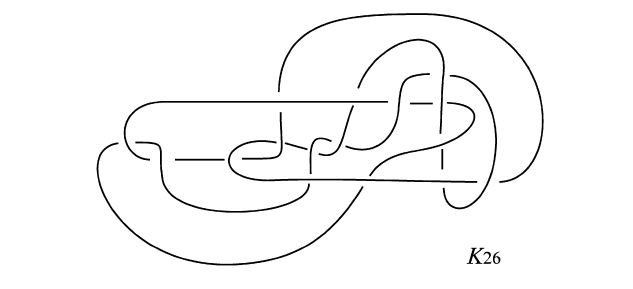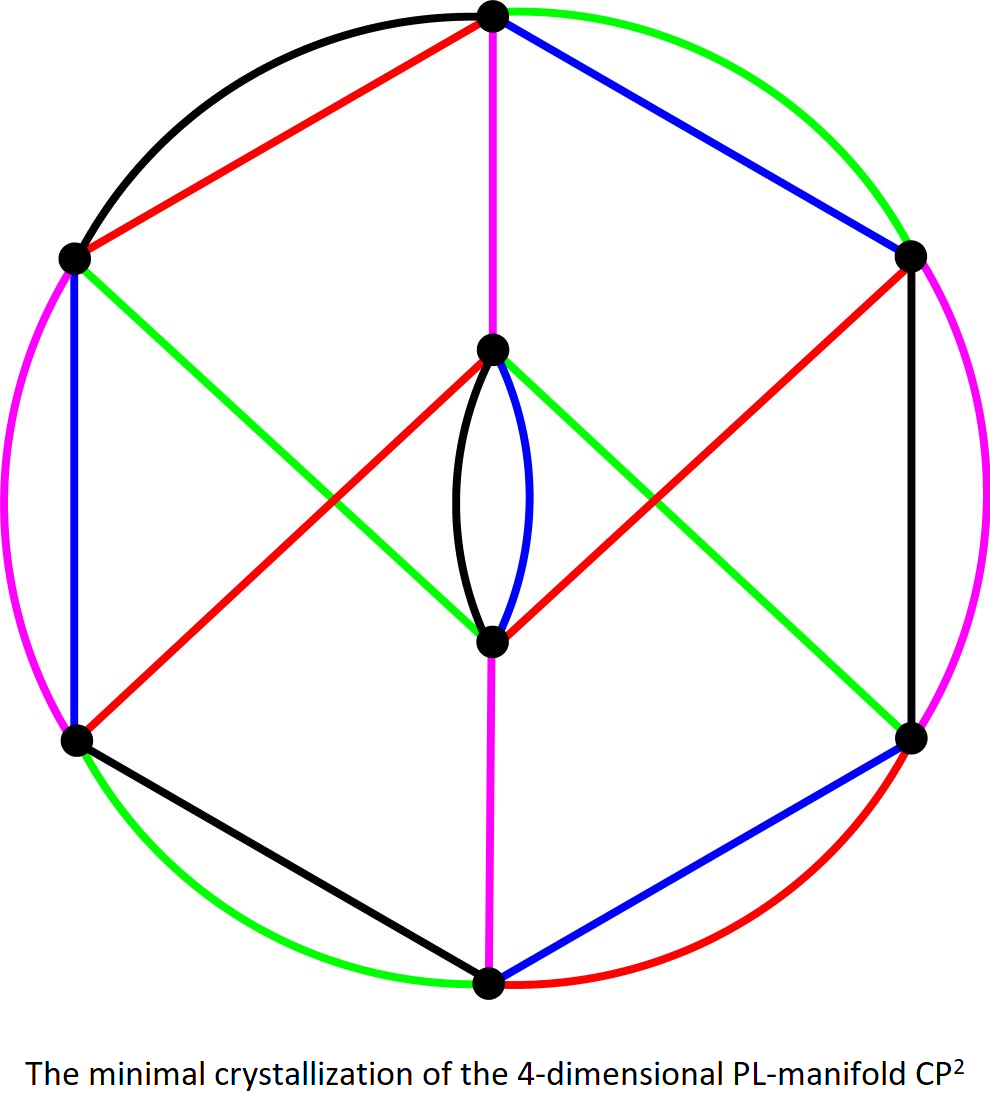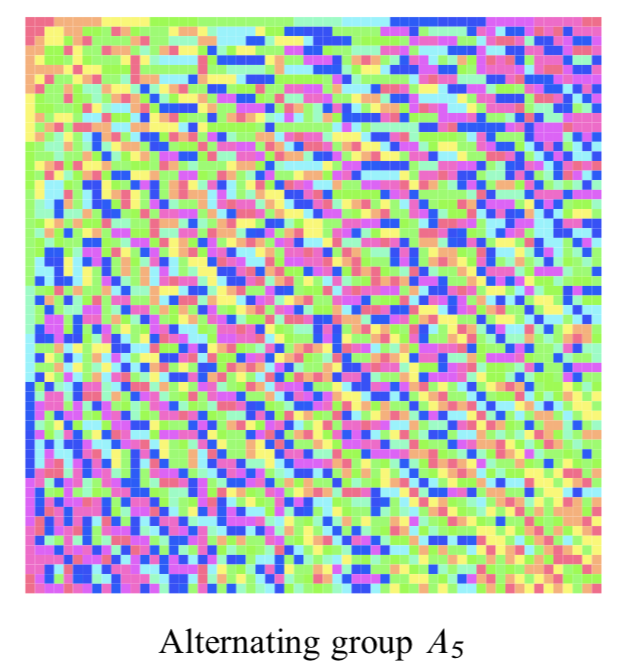The Algebra and Geometry group at FIM has an established research tradition in the study of algebraic and geometric structures, which are discrete or suitable to be treated through discretization techniques. The research topics include algebraic and geometric topology, combinatorial group theory, graph theory, PL topology through edge-colored graphs, asymptotic and profinite group theory, algebraic and enumerative geometry, complex and Galois geometry. The intrinsic theoretical interest towards such topics is also boosted by their applications to science and technology.
The main lines of research are the following.
Algebraic and differential topology
- Topology of algebraic varieties and moduli spaces
- Topology and combinatorial invariants of manifolds
- Complex and differential geometry
PL topology and crystallization theory
- Trisections of PL 4-manifolds and their generalizations
- Catalogues of PL manifolds by means of edge-colored graphs
- Applications of crystallization theory to quantum gravity
Combinatorics and discrete mathematics
- Geometry over finite fields and applications to information theory
- Graph theory techniques applied to social sciences and biology
- Covering, colorings and nowhere-zero flows of regular graphs
Group theory and generalizations
- Asymptotic and profinite group theory
- Lie rings and application of Lie-theoretic techniques to groups
- Automorphisms of finite and residually finite groups
Participants: Cristina Acciarri, Arrigo Bonisoli, Simona Bonvicini, Maria Rita Casali (P.I.), Alberto Cavicchioli, Paola Cristofori, Camilla Felisetti, Giuseppe Mazzuoccolo, Fulvia Spaggiari, Giovanni Zini

The scientific research principally regards problems related to topological, algebraic and differentiable manifolds (and their generalizations) faced by techniques of Algebraic and Differential Geometry, Combinatorial Theory of Groups, Homological Algebra, Knot Theory, and Graph Theory. The main goals of the research are to obtain the topological and homotopical classification of large classes of spaces (as manifolds, generalized manifolds, Poincare` complexes, structured polyhedra, etc.) and to determine the cobordism class of them and to compute their principal algebraic invariants. Using methods of Homological Algebra and L-Theory, we study several questions of Algebraic Surgery Theory on compact manifolds and of Dehn-Lickorish Surgery on knots and links. We also analyze the algebraic properties of the obstruction groups for Surgery and construct several spectral sequences which are very useful for the classification problems mentioned before. Finally, the representation of compact polyhedra by means of oriented and/or coloured graphs allows us to give combinatorial methods for the explicit computation of their algebraic and numerical invariants.
Furthermore, we combine the above mentioned techniques with Hodge Theory to study the topological properties of algebraic maps between complex algebraic varieties. In particular, we focus on the study of decorated moduli spaces of vector bundles and varieties arising from geometric representation theory.

Crystallization theory is a graph-theoretical representation method for compact PL-manifolds of arbitrary dimension, with or without boundary, which makes use of a particular class of edge-coloured graphs, which are dual to coloured (pseudo-) triangulations. These graphs are usually called gems, i.e. Graph Encoding Manifolds. One of the principal features of crystallization theory relies on the purely combinatorial nature of the representing objects, which makes them particularly suitable for computer manipulation.
Recent research by the local group focuses on:
- relationships between crystallization theory and coloured tensor models in high dimensional quantum gravity
- generation of catalogues of PL-manifolds for increasing values of the vertex number of the representing graphs, both in dimension three and four
- definition and/or computation of invariants for PL-manifolds, directly from the representing graphs, in dimension n ≥ 3
- trisections of PL 4-manifolds with boundary

Combinatorics and discrete mathematics deals with mathematical structures consisting of finitely many objects. Most of them can be described by so-called block-designs and graphs, whose relevant properties can be described in terms of incidence relations. The interest towards designs and graphs is boosted by a number of applications in several areas, from social sciences to biology, from information theory to logistics. Remarkable classes of designs and graphs
also have a theoretic intrinsic interest, especially when symmetries arise and can be exploited in the investigation, construction and characterization of such objects. In this direction, we are interested in signed graphs with balance properties, in coverings and colorings of regular graphs, depending on the structural properties of the graph. We are also interested in the study of multidimensional nowhere-zero flows on graphs with particular properties of optimality. Such a wide variety of combinatorial objects requires to “combine” several approaches and techniques including a geometric point of view, which can be applied to finite geometric spaces. In particular, we study remarkable pointsetsin geometries over finite fields, their relation to polynomials and varieties, and their application to information theory.

Group theory can be thought of as the study of symmetries, that is, transformations preserving certain “structures”. The groups, as measures of symmetry, have an interesting theory in their own right and are also used in many research fields as Galois theory, algebraic topology, dynamical systems, combinatorics, cryptography, some branches of analysis and in natural sciences as well.
Roughly speaking, asymptotic group theory can be thought of as groups viewed from some distance. The finer details disappear, and the rough lines become the main focus. In asymptotic group theory an infinite family of finite groups or sometimes the set of finite quotients of some given infinite group are the objects of interest. In particular profinite groups arise in nature as Galois groups of infinite algebraic extensions and they have a very interesting theory. A profinite group is a compact topological group that is built out of finite groups and the properties of the topological group reflect group-theoretic properties
of all the finite groups.
Some research topics we are interested in are: residually finite groups; words and verbal subgroups in profinite groups; automorphisms and application of Lie methods to profinite groups; probabilistic methods in compact groups; residual properties of groups and their relation to associated graphs.